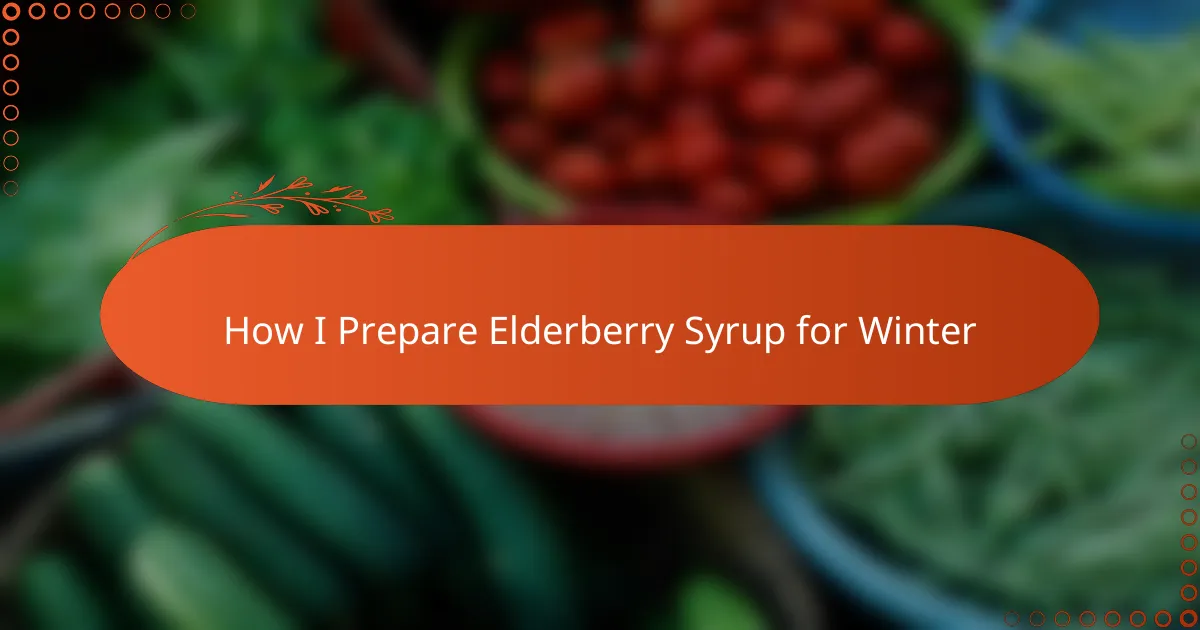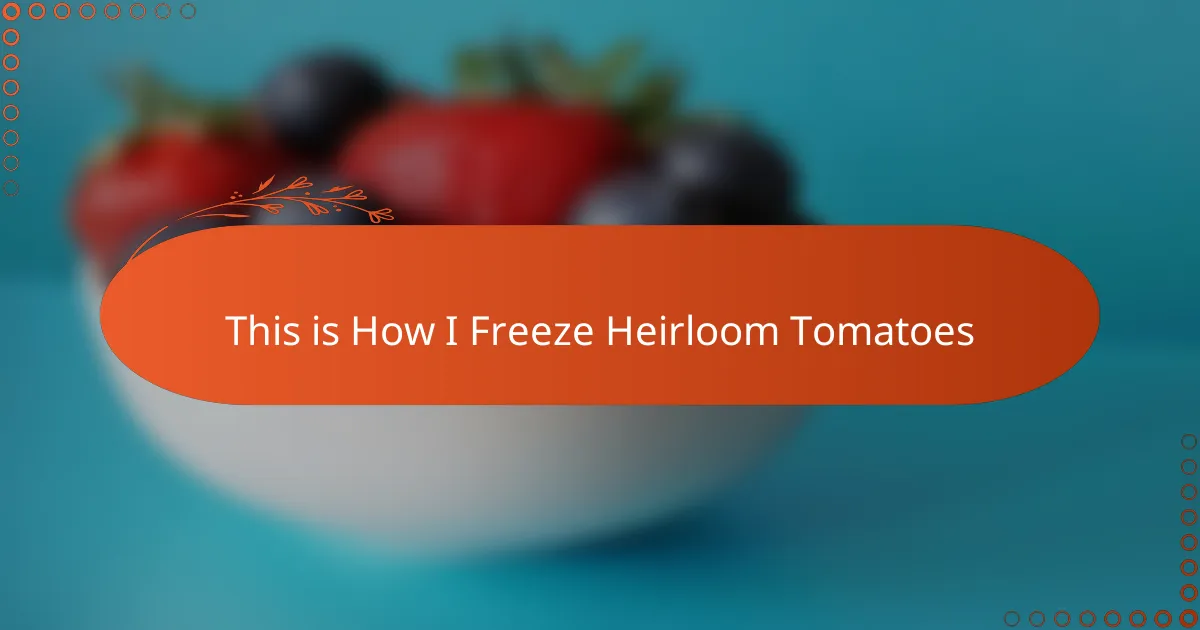Key takeaways
- Dehydrating fruits preserves flavors while reducing food waste and provides a compact storage solution.
- A reliable food dehydrator, uniform slicing, and proper spacing on trays are essential for successful drying.
- Common mistakes include not pre-treating fruits, overcrowding trays, and rushing the drying process with high temperatures.
- Dehydrated fruits can enhance recipes, offering unique flavors and textures in both sweet and savory dishes.

Overview of Dehydrating Fruits
Dehydrating fruits is one of those simple yet satisfying techniques that I’ve come to really appreciate in my homesteading kitchen. It’s amazing how removing moisture not only preserves the fruit but also concentrates the flavors, making each bite burst with sweetness. Have you ever noticed how a dried apple slice tastes richer than its fresh counterpart? That’s the magic of dehydration at work.
When I first started, I was skeptical about whether dried fruits could actually replace fresh ones in recipes or snacks. But the texture and portability won me over quickly, especially when fresh produce wasn’t in season. Plus, it feels like a mini victory to transform abundant harvests into shelf-stable treasures without any added preservatives.
Looking back, I realize dehydrating fruits isn’t just about preservation—it’s about capturing a moment in time, a season’s bounty, and holding onto it. It makes me wonder how many other everyday practices we overlook that could add both flavor and sustainability to our homestead lifestyle.

Benefits of Fruit Dehydration in Homesteading
One of the biggest benefits I’ve found in dehydrating fruits on the homestead is how it significantly reduces food waste. When the orchard overloads or the garden gives more than you can eat fresh, drying those fruits feels like a smart solution rather than letting them spoil. Have you ever tossed perfectly good fruit just because it was past its prime? That feeling used to bother me — now, I just dry instead.
Another advantage that stands out is how compact and lightweight dried fruits are compared to fresh ones. Storing bulky jars of jam or freezing bags of berries takes up so much space, but dried fruits fit neatly into small containers or bags. It’s such a relief to open a pantry shelf filled with vibrant, shelf-stable snacks that require no refrigeration or complicated storage.
And honestly, the process itself gives a satisfying sense of self-reliance. Dehydrating feels like a craft – transforming something perishable into a lasting resource using just your own hands and a bit of time. That feeling of independence is priceless on a homestead, where every little bit helps build resilience for the seasons ahead.

Essential Equipment for Fruit Dehydration
When I first ventured into fruit dehydration, the single most important tool I invested in was a reliable food dehydrator. It might sound obvious, but having consistent heat and airflow made all the difference between chewy, flavorful dried fruit and a disappointing, uneven result. Have you ever tried drying fruit on just a hot sunny day? It works, but the unpredictability can be frustrating—I learned that the appliance gives me control and peace of mind.
Besides the dehydrator itself, I found that having good-quality trays with fine mesh or perforations is essential. These let air circulate around the fruit perfectly, preventing soggy spots and speeding up drying time. It’s a small detail, but when you’re trying to preserve a big batch from your summer harvest, every minute counts.
Another piece of equipment I didn’t expect to become so handy is a sharp paring knife and a sturdy cutting board. Uniform slices dry more evenly, and those early attempts with uneven chunks taught me the value of preparation before loading trays. It might feel tedious, but this step saves you from wasting fruit and energy—something every homesteader appreciates, right?

Step by Step Fruit Dehydrating Process
First, I always start by washing and thoroughly drying the fruit to prevent any unwanted moisture that could spoil the batch. Then, slicing the fruit into uniform pieces is crucial—I remember getting impatient once and tossing uneven slices on the tray, which led to some pieces drying too fast and others staying stubbornly moist. Have you ever dealt with that inconsistency? Trust me, taking the time to cut evenly makes all the difference.
Next, I arrange the slices on the dehydrator trays in a single layer, leaving enough space between each piece to allow air to flow freely. It feels a bit like laying out little fruit canvases, and I find this step oddly satisfying—almost meditative. Setting the dehydrator to the right temperature, usually around 135°F (57°C), is where the magic begins; watching the fruit slowly transform is a process I never tire of seeing.
Finally, patience is key. Depending on the fruit’s water content, drying times vary, so I’m always checking periodically and flipping pieces if needed. It’s a balance of vigilance and letting nature do its work—like tending a garden but with sweet rewards in the end. Have you tried tasting the fruit at different stages? That moment when it’s perfectly chewy but not brittle is what keeps me coming back to this simple art.

Common Mistakes to Avoid When Dehydrating Fruits
One mistake I made early on was not pre-treating certain fruits before drying them. I learned the hard way that fruits like apples and pears can brown and lose that vibrant color if I skip a quick soak in lemon juice or a similar acidulated water. Have you ever pulled out a batch only to be disappointed by dull, unappetizing slices? That moment taught me the value of this small extra step, which keeps my fruits looking as fresh as they taste.
Another rookie error I often see homesteaders make is overcrowding the trays. When fruit slices are crammed too closely, air can’t circulate properly, leading to uneven drying and even mold development. Personally, spacing out each piece just right feels like setting the stage for a good harvest—it’s worth the extra effort to avoid a batch going to waste.
And here’s a common one that caught me off guard: rushing the drying process by turning up the heat too high. It might seem like a shortcut, but higher temperatures often cook the fruit instead of gently drying it, causing tough textures or burnt edges. Patience is a virtue here, and learning to trust the process has saved me countless batches from disappointment. Have you ever tried to speed things up only to regret it? I definitely have, and it’s a lesson I won’t forget.

My Personal Experience with Dehydrated Fruits
Handling dehydrated fruits has become one of my favorite kitchen rituals. I remember the first time I bit into a batch of dried peaches—I was surprised by how intense and sweet the flavor was, much more concentrated than fresh. It felt like capturing summer in a bite, something I could savor long after the season had ended.
There’s something deeply satisfying about knowing that I created these shelf-stable snacks with my own hands. I’ve often reached for a bag of dried mixed berries during busy days, appreciating their convenience and how they remind me of the harvest’s generosity. Honestly, it’s a small joy that makes all the time spent slicing and arranging trays totally worth it.
Have I ever had batches go awry? Absolutely. I once neglected to space the fruit properly, and the result was a sticky mess rather than the chewy treats I’d hoped for. Those experiences taught me patience and precision, making every successful batch feel like a personal victory. Don’t you think it’s rewarding when a simple kitchen skill turns into a satisfying craft? I certainly do.

Creative Recipes Using Dehydrated Fruits
There’s something truly fun about experimenting with dehydrated fruits beyond just snacks. One of my favorite creative twists is folding chopped dried apricots and cranberries into muffin or pancake batter—it adds a chewy, tangy surprise that fresh fruit just can’t match. Have you ever tried baking with dried fruits? The concentrated sweetness changes the whole flavor profile and keeps the baked goods moist longer.
I also love tossing dehydrated apple rings and cinnamon into my morning oatmeal or yogurt. It feels like a tiny celebration of fall flavor any time of year. Plus, the texture contrast between the softened fruit and crunchy nuts gives every spoonful a little excitement. Why settle for plain breakfast when you can elevate it with these simple additions?
For savory dishes, I’m often surprised how well dried cherries or figs complement cheeses and nuts on a homemade charcuterie board. That balance of sweet and savory always gets compliments when guests stop by. Have you noticed how dehydrated fruits bring depth to recipes that fresh fruit sometimes can’t provide? It’s a game changer for anyone who loves playing in the kitchen as much as I do.



